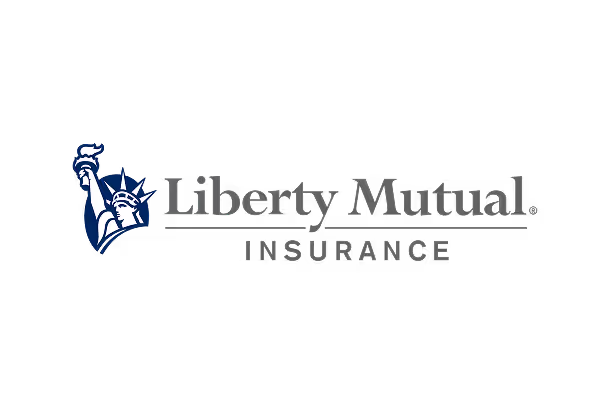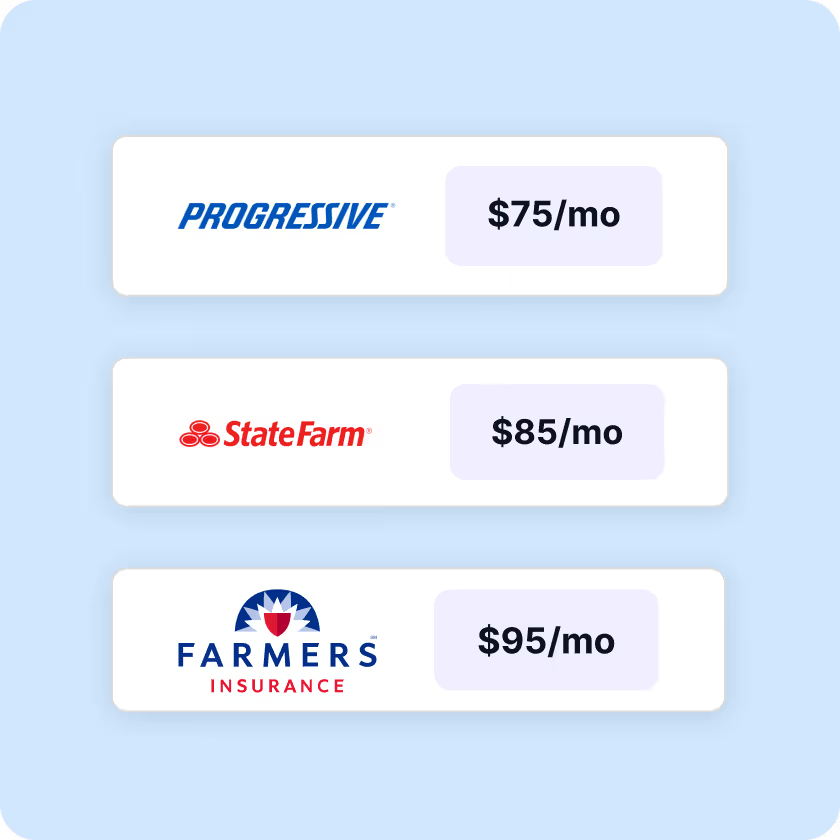
Kudos has partnered with CardRatings and Red Ventures for our coverage of credit card products. Kudos, CardRatings, and Red Ventures may receive a commission from card issuers. Kudos may receive commission from card issuers. Some of the card offers that appear on Kudos are from advertisers and may impact how and where card products appear on the site. Kudos tries to include as many card companies and offers as we are aware of, including offers from issuers that don't pay us, but we may not cover all card companies or all available card offers. You don't have to use our links, but we're grateful when you do!
Term vs. Whole Life Insurance: Key Differences and How to Choose
July 1, 2025

.avif)
When shopping for life insurance, one of the first big decisions is choosing between term life and whole life (permanent) insurance.
These two types of policies work very differently and the right choice depends on your needs. In this article, we’ll explain term vs. whole life insurance in clear terms – what each one is, their pros and cons, how much they cost, and how to decide which is best for you.
By the end, you’ll have a solid understanding of these options so you can make an informed decision on your life insurance.

What Is Term Life Insurance?
Term life insurance is the simplest and most popular type of life insurance. As the name implies, it provides coverage for a specific term, or length of time. Common term lengths are 10, 20, or 30 years, though other durations are available. Here’s how term life works and why many people choose it:
Coverage period:
You select a term based on how long you need life insurance protection. For example, new parents might choose a 20-year term to cover their family until the kids are grown, or a homeowner might choose a 30-year term to match a mortgage.
If you pass away within that term, the policy pays out to your beneficiaries. If you’re still alive when the term ends, the coverage expires. (At that point, you could often renew or buy a new policy if needed, but at a higher age-based rate.)
Cost (premiums):
Term life is highly affordable relative to permanent life insurance. Because it’s temporary and has no cash value savings component, you’re primarily paying just for pure insurance protection. For instance, a 30-year-old healthy male might pay around $20–$30 per month for a $500,000, 20-year term policy, whereas a whole life policy with the same coverage could cost 10-20 times more.
In general, term life insurance is much cheaper than whole life insurance, making it budget-friendly to get a large amount of coverage.
Payout:
If you die during the term, your beneficiaries receive the death benefit (e.g. $500,000) as a lump sum. They can use it for any purpose (replacing your income, paying off debts, etc.). If you outlive the term, no benefit is paid out – the policy simply ends.
Think of term life like car insurance: you pay for coverage each year, but if you don’t end up needing to make a claim, you don’t get money back. The value is in having the protection in case of a tragedy.
No cash value:
Term policies do not build cash value or any savings component. You can’t borrow against them or cash them out (some term policies do offer a return-of-premium feature for a higher cost, but those are less common). The premium you pay purely secures the death benefit coverage.
Pros of Term Life Insurance:
- Low cost: Term life lets you purchase a high coverage amount for a relatively low price. It’s often the only feasible way for young families to get, say, $500k or $1 million in coverage to truly replace income if a parent dies.
- Simplicity: It’s straightforward – pay the premium, get covered for the term. No investment or savings gimmicks. This makes it easy to compare policies and know what you’re getting.
- Flexibility: You can choose the term length that matches your needs. Also, many term policies have the option to convert to a permanent policy if your needs change (typically you can convert before the term ends without a health exam, which is a nice feature if, for example, you develop a medical condition and want lifelong coverage).
- Great for temporary needs: If you only need coverage for a certain period (until loans are paid or kids independent), term is ideal. You’re not stuck paying for a lifetime if you only needed insurance during those years.
Cons of Term Life Insurance:
- Temporary nature: If you still need coverage after the term expires, you’ll have to get a new policy at a higher age (and possibly higher health risk) – that can become expensive or even impractical if you’ve had health issues. There’s the risk that you might outlive your coverage and later find insurance costly.
- No cash value: You don’t get any money back from a term policy unless you die during the term. Some people dislike “paying for something and getting nothing” if they outlive the policy. (Of course, the flip side is living is a good outcome – and you did get the peace of mind during those years!)
Term life insurance is often described as “pure protection.” It’s there to do one thing – provide financial support to your loved ones if you die during a certain period. Because of its low cost and simplicity, term life is the choice for the majority of life insurance shoppers, especially younger individuals and families.
What Is Whole Life Insurance?
Whole life insurance is the most well-known type of permanent life insurance. “Permanent” means it’s designed to last your entire lifetime (up to age 100+), rather than a set term.
Whole life is more complex than term, because it combines an insurance benefit with a savings/investment component. Here’s a breakdown of how whole life works:
Lifetime coverage:
A whole life policy doesn’t expire as long as you continue paying the premiums. Whether you pass away 5 years after purchase or 50 years later, it will pay out to your beneficiaries. This guarantees a death benefit will be paid at some point (in contrast, many term policies expire with no payout because the insured outlives the term). If living to the policy’s maturity (often age 100 or 121 in newer policies), some policies will pay out the death benefit to the owner at that age even if still alive.
Fixed premiums:
With whole life, your premium amount is typically locked in for life at the time you buy. For example, you might pay $200 per month every month for as long as you live (or some policies allow you to pay for a limited period like 20 years, after which it’s considered paid-up). The premium is much higher than term because it’s covering the cost of lifelong insurance and funding the cash value. On the bright side, it will never increase, even as you get older or if your health changes.
Cash value accumulation:
This is the savings/investment feature. A portion of your premium goes into a cash value account inside the policy. This cash value grows over time, usually at a modest guaranteed interest rate (and sometimes additional dividends for participating policies from mutual insurers). Over years and decades, the cash value can become a substantial amount.
You can borrow against it (take a policy loan using the cash value as collateral) or sometimes withdraw it. If you surrender (cancel) the policy, you get the cash value (minus any surrender charges) instead of the death benefit. The cash value is essentially your “equity” in the policy. It’s important to note the cash value growth is typically slow in the early years – whole life is a long-term proposition. (In the first few years, most of your premium goes to insurance costs and fees, with little building cash value yet.)
Higher cost:
To state it plainly, whole life insurance is expensive. Premiums can be many times higher than term for the same death benefit. For example, a $250,000 whole life policy might cost a 30-year-old several hundred dollars a month, whereas a $250,000 term policy might be under $20 a month.
According to one estimate, a healthy 30-year-old woman would pay around $3,861 annually for $500,000 of whole life coverage, versus about $187 annually for a 20-year $500,000 term policy. That huge cost difference is why most average people can’t afford enough whole life coverage to meet all their needs. They might only carry a small whole life policy (if any) due to the expense.
Pros of Whole Life Insurance:
- Lifelong protection: You don’t have to worry about outliving your coverage. This is important if you have long-term obligations or simply want to leave a guaranteed inheritance. No matter when you die, a payout is assured for your beneficiaries (as long as you’ve paid premiums).
- Cash value & forced savings: Whole life builds cash value that you can tap into. It’s like a very conservative savings account attached to your policy. Over time, you could borrow from it for emergencies or opportunities (though loans reduce the death benefit if not repaid). Some people use this as a way to accumulate tax-deferred wealth; the cash value growth is not taxed while inside the policy. It can also serve as an extra cushion in retirement or a way to pay premiums later (you can use dividends or loans to cover premium payments in later years). Essentially, it forces you to save money, which can be a pro for those who might not save otherwise.
- Stable, predictable product: Whole life premiums, cash value growth, and death benefit are generally very predictable. There’s less uncertainty – you know the cost and the guarantees upfront. For those who dislike risk, whole life offers certainty (unlike, say, investments that fluctuate, or term insurance that might expire before you die).
- Estate planning and other uses: Whole life is often used in estate planning because the death benefit provides liquidity to pay estate taxes or to leave a specific legacy. It can also be useful for funding things like a special needs trust for a dependent, or for business continuation (e.g., funding a buy-sell agreement between business partners). Additionally, some use whole life’s cash value as a way to supplement retirement income or as an ultra-safe investment piece in their portfolio, albeit with lower returns.
Cons of Whole Life Insurance:
- High cost, which can lead to being underinsured: The biggest drawback is cost. Whole life premiums are so steep that many people either a) can’t sustain paying them long-term, or b) have to opt for a much smaller death benefit than they actually need because that’s all they can afford. For instance, you might need $500k coverage but can only budget for a $100k whole life – which means your family could be under-protected. Cost is a major reason why 48% of Americans have no life insurance or not enough – many overestimate the cost or get discouraged. Term is usually a better fit for limited budgets.
- Complexity: Whole life is more complicated. There are policy illustrations, dividend schedules, loan provisions, etc. You have to understand how the cash value works and the impact of loans or partial withdrawals. If you just want straightforward coverage, whole life can feel overwhelming. Also, it often requires working with an agent; there are fewer easy online comparison options for whole life.
- Lower investment returns: The cash value in a whole life policy grows at a relatively conservative rate. In many cases, you might get a 2%–5% internal rate of return over the long run (exact figures vary). This is generally less than what you might earn investing in the stock market over decades. So, as an investment, whole life may not be the highest yielding option. Some financial experts argue you’re better off buying cheaper term insurance and investing the difference in cost on your own – you could potentially come out ahead that way, though it requires discipline (often termed “buy term and invest the difference” strategy).
- Surrender penalties: If you decide you don’t want the policy anymore and cancel (surrender) it in the early years, you might get little or no cash value back, because of surrender charges. Whole life is not designed to be dropped early – it’s a long-term commitment, and backing out can be costly.
In summary, whole life insurance can be “worth it” for people who truly need lifetime coverage and value the cash value growth, and who can comfortably afford the premiums. It provides peace of mind forever and a built-in savings component.
However, for many budget-conscious consumers with temporary needs, the cost-benefit ratio of whole life doesn’t pan out. They opt for term and invest savings elsewhere. Whole life tends to make the most sense as part of a broader financial strategy for higher-income individuals, or for specific cases like covering final expenses or leaving a guaranteed inheritance.
Term vs. Whole Life: Which Should You Choose?
Choosing between term and whole life insurance comes down to your specific needs, goals, and budget.
There’s no one-size-fits-all answer, but here are some guidelines to help you decide:
Budget and Coverage Amount Needs:
If you need a large amount of insurance coverage (for example, to replace decades of income or cover a big mortgage) and cost is a concern, term life is likely the better choice. For the price of a small whole life policy, you could often get a term policy with 5-10 times higher death benefit. Getting adequate coverage is crucial – a cheaper term policy that fully protects your family is far more valuable than an expensive whole life that leaves you underinsured. Remember, term life insurance is designed to be affordable, especially for younger people, whereas whole life’s cost can be prohibitive.
Duration of Need:
Consider how long you actually need coverage. Are you insuring against the risk of dying young (to protect children until they’re grown, or cover a 20-year mortgage)? If so, a term policy that covers that span is usually sufficient. On the other hand, if you have a lifelong obligation – for instance, you have a child with special needs who will require care no matter when you pass, or you want to ensure your spouse has money no matter if you die at 45 or 95 – then a permanent policy might be warranted. Also, some people want life insurance as part of their legacy or estate plans, to leave money or cover taxes when they die at an old age; whole life fulfills that goal because term would likely expire before then.
Savings Component – Do You Need It?
Ask yourself if the cash value aspect of whole life is appealing or necessary for you. Are you looking for an insurance policy and a way to accumulate savings in one? If you are a disciplined saver/investor, you might prefer to keep insurance and investing separate (buy term insurance and invest in 401(k)s, IRAs, or other vehicles for potentially higher returns). If you’re worried you won’t invest the difference or you like the idea of a guaranteed, slow-growing savings that you can’t easily raid, then whole life’s forced savings could be a pro. Just weigh it against the lower net death benefit you might be getting due to higher premiums.
Future Flexibility:
Keep in mind, you’re not locked into one forever. You could start with term life while you’re young and raising a family (when protection is critical and budget is tight), and later in life, if you still want coverage, you might convert some or all of that to a permanent policy or purchase a new permanent policy once you’re in a better financial position. Many people effectively use both: term for their big coverage needs now, and perhaps a small whole life policy they keep for their entire life (for example, a $25,000 policy just to cover funeral costs or leave a small inheritance). It doesn’t have to be an all-or-nothing choice.
Advice:
It can be helpful to talk to a financial advisor or insurance broker who isn’t pushing one product. They can run the numbers with you. Often, when people see how much coverage they need and the cost difference, term life comes out as the practical solution for the core insurance need, and whole life might be an add-on if affordable. According to consumer research, one of the top reasons people don’t buy life insurance is uncertainty about what type to get, so getting some guidance can clear that up.
In general, for most first-time life insurance buyers with average incomes, term life insurance is the recommended starting point. It offers maximum protection per dollar and you can align the term with your family’s most financially vulnerable years. Whole life insurance can be added later or for specific purposes once the primary protection need is met.

FAQs: Term vs. Whole Life
Can I have both term and whole life insurance?
Yes, absolutely. It’s common to mix and match policies to meet your needs.
Is whole life insurance a good investment?
Whole life insurance is primarily an insurance product, not an investment in the traditional sense. It does have an investment-like component (cash value), but the returns are generally modest. Financial planners often say to view life insurance for its death benefit first; any cash value growth is a secondary perk. If you compare whole life’s cash value growth to investing in stocks or mutual funds, you’ll usually find the investment account could yield higher returns over the long run.
Can I convert my term life policy into a whole life policy later?
In many cases, yes. A lot of term life insurance policies come with a conversion option, which allows you to convert the term policy (before it expires and before a certain age deadline) into a permanent life policy offered by the same insurer, without needing a new medical exam.
Who is whole life insurance best for?
Whole life (and permanent insurance in general) is best for individuals who 1) have a lifelong need for insurance coverage and 2) can comfortably afford the premiums even as other expenses in life fluctuate.
Some scenarios where whole life might be appropriate include:
- High net-worth individuals who expect their estate to owe estate taxes or who want to leave a guaranteed inheritance.
- Individuals with lifelong dependents, such as a child with disabilities who will need care and financial support no matter when you die.
- People looking for stable wealth accumulation in addition to insurance, and who have maxed out other tax-advantaged options.
- Those who want to cover end-of-life expenses in advance. Some folks in their 50s or 60s buy a modest whole life policy (sometimes called “final expense” insurance) that they know will eventually pay for their funeral or leave a small legacy.
- Business owners or partnership arrangements – whole life can fund buy-sell agreements or key person insurance, where a permanent guarantee is important for business continuity regardless of timing.
Does term life insurance have any value if I don’t die during the term?
Under a standard term life policy, if you outlive the term, the policy ends and no money is paid out. The premiums you paid are used to cover the insurance coverage you had during those years – essentially, you “rented” life insurance protection. There is no cash value or refund (unless you purchased a specialized return-of-premium term policy, which returns premiums at the end but those are much more expensive and not very common). So in pure financial terms, a normal term policy has no value after it expires.
In the debate of term vs. whole life, remember that the best life insurance policy is the one that is in force when you need it. For many, that means an affordable term policy now – versus procrastinating because you’re unsure, and then having nothing when it’s needed.
You can always adjust your strategy as your life evolves. Some people eventually carry both types. Use this knowledge as a foundation, and consider speaking with a financial advisor for personalized advice. With the right choice, you’ll gain peace of mind knowing you have the proper protection in place for your loved ones.
Unlock your extra benefits when you become a Kudos member

Turn your online shopping into even more rewards

Join over 400,000 members simplifying their finances

Editorial Disclosure: Opinions expressed here are those of Kudos alone, not those of any bank, credit card issuer, hotel, airline, or other entity. This content has not been reviewed, approved or otherwise endorsed by any of the entities included within the post.



































.webp)



.webp)

.webp)


